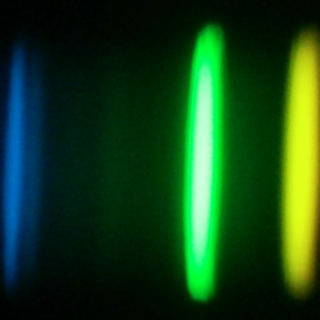Bibcode
Manser, Christopher J.; Gänsicke, Boris T.; Inight, Keith; Robert, Akshay; Ahlen, S.; Allende Prieto, C.; Brooks, D.; Cooper, A. P.; de la Macorra, A.; Font-Ribera, A.; Honscheid, K.; Kisner, T.; Landriau, M.; Meisner, Aaron M.; Miquel, R.; Nie, Jundan; Poppett, C.; Tarlé, Gregory; Zhou, Zhimin
Referencia bibliográfica
Monthly Notices of the Royal Astronomical Society
Fecha de publicación:
6
2023
Número de citas
20
Número de citas referidas
17
Descripción
A new class of white dwarfs, dubbed DAHe, that present Zeeman-split Balmer lines in emission has recently emerged. However, the physical origin of these emission lines remains unclear. We present here a sample of 21 newly identified DAHe systems and determine magnetic field strengths and (for a subset) periods that span the ranges of ≃6.5-147 MG and ≃0.4-36 h, respectively. All but four of these systems were identified from the Dark Energy Spectroscopic Instrument survey sample of more than 47 000 white dwarf candidates observed during its first year of observations. We present detailed analysis of the new DAHe WD J161634.36+541011.51 with a spin period of 95.3 min, which exhibits an anticorrelation between broad-band flux and Balmer line strength that is typically observed for this class of systems. All DAHe systems cluster closely on the Gaia Hertzsprung-Russell diagram where they represent ≃1 per cent of white dwarfs within that region. This grouping further solidifies their unexplained emergence at relatively late cooling times and we discuss this in context of current formation theories. Nine of the new DAHe systems are identifiable from Sloan Digital Sky Survey spectra of white dwarfs that had been previously classified as featureless DC-type systems. We suggest high-S/N (signal-to-noise ratios), unbiased observations of DCs as a possible route for discovering additional DAHe systems.
Proyectos relacionados

Abundancias Químicas en Estrellas
La espectroscopía de estrellas nos permite determinar las propiedades y composiciones químicas de las mismas. A partir de esta información para estrellas de diferente edad en la Vía Láctea es posible reconstruir la evolución química de la Galaxia, así como el origen de los elementos más pesados que el boro, forjados principalmente en los interiores
Carlos
Allende Prieto